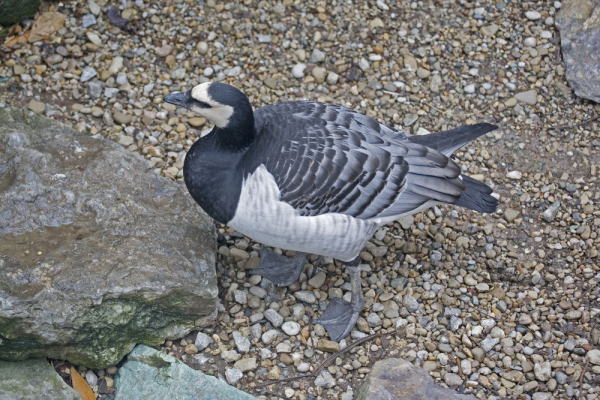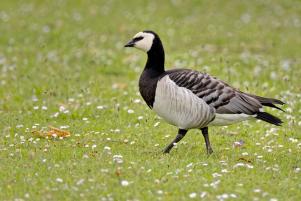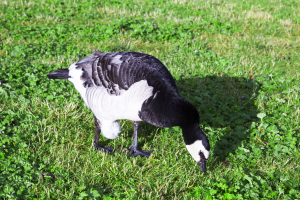
Think you have it hard at home? Imagine if your parents let you learn to fly at only a few days old by jumping off of the cliff where your nest is built and expecting you to follow? Dish duty doesn’t sound so bad when compared to what young Barnacle Geese go through just days after they hatch from their eggs. In addition to their daredevil nature, there are lots of fascinating things about the Barnacle Goose that sets it apart from the rest of the goose family. Here are just a few things you should know about these incredible birds.

The Barnacle Goose, or its scientific name of Branta leucopsis, was first classified in 1803 and got its scientific name from the Old Norse Brandgás, which means “burnt” or “black goose” and the Ancient Greek phrase leukos opsis, meaning “white faced”. For a long time, the Barnacle Goose and Brant Goose were thought to be the same species and were believed to spawn from the goose barnacle, which gave it its more common name. The Barnacle Goose is a medium sized goose with a white face and black head, neck, and upper breast. It has a white belly and silver-grey wings and back decorated with black and white bars that give off a shining appearance when light flashes off of them. When they fly, you’ll probably notice a white rump patch and silver-grey underwings that you wouldn’t see while the birds are on the ground.
Barnacle Geese breed mostly on the Arctic islands of the North Atlantic ocean. There are three main populations with different breeding and wintering ranges that stretch from Greenland, Ireland, and Scotland all the way to Russia and Ukraine. A few of these birds can also be found in the Northeastern United States and Canada, usually escapees from zoos and private collections. Barnacle Geese often build their nests high on mountains and cliffs where predators like Arctic Foxes and Polar Bears can’t reach them. Strangely, this also puts them far away from feeding grounds like lakes and rivers. Like all geese, the parents don’t bring food back to their young in the nests, which brings us to the baby Barnacle Goose plunge. Instead of being fed by the adults, newly hatched goslings jump down to the ground after their parents show them how. At this point, they aren’t able to fly yet, but their tiny size, light weight, and soft feathery down helps to protect them from serious injury when they hit the ground. Once they’ve made it down, they are led to wetland feeding areas by their parents and learn how to find food for themselves.

Another fascinating thing about Barnacle Geese is that, according to legend, they were born of driftwood. While this was later proven to be not true, the story was passed around so much that it made it into medieval encyclopedias and other educational texts. The reality of the Barnacle Goose isn’t less exciting by any means, though, and there is so much more to learn about these fascinating birds.
